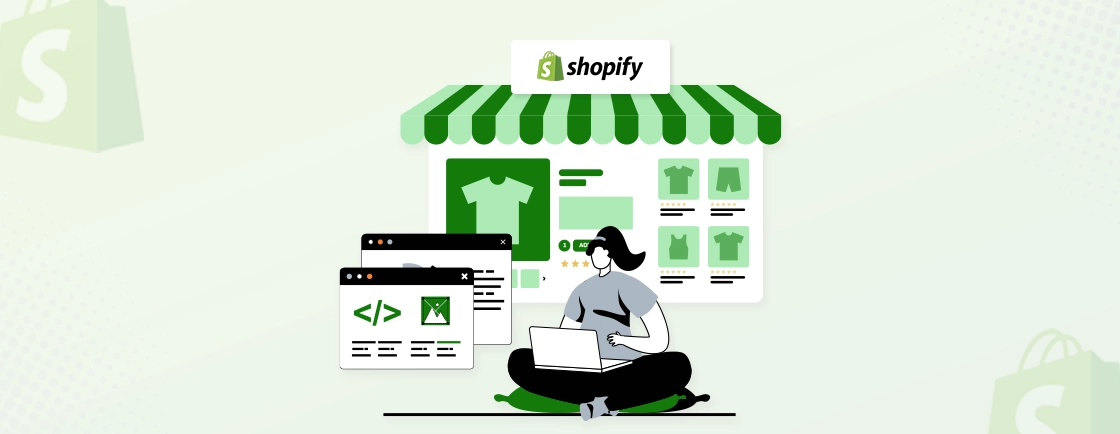Table of Contents
Do you want to take your business to the next level? Are you looking to venture out into the digital space of eCommerce? Then, creating a marketplace on Shopify might give you a head start. This versatile and user-friendly platform has empowered countless businesses to set up their online stores.
Shopify is versatile and user-friendly and boasts some outstanding features that have made it a popular choice in the e-commerce industry. Whether you’re selling physical products, digital downloads, or services, Shopify can be tailored to meet your specific needs.
So, in this blog, we’ll explain why Shopify is one of the best tools for online marketplaces and how you can create one as well. You’ll also learn how Shopify experts can help take your store to the next level.
Now, I think you know what Shopify is, so let’s skip past that.
Why Choose Shopify for an Online Marketplace?
There are several platforms available for creating a multi vendor marketplace, like Shopify, WooCommerce, Magento, and more. But, it’s important to carefully consider your specific needs and preferences before selecting the right platform.
You can create an online marketplace on WordPress using WooCommerce. However, the experience vastly differs from that of Shopify. For starters, comparing WooCommerce and Shopify, the former is a part of the WordPress ecosystem and doesn’t get hosting by default. Shopify, on the other hand, offers hosting with most of its eCommerce plans.
Let’s discuss a few other reasons for why you may choose Shopify for your multivendor marketplace development.
User-Friendly Interface: Creating a marketplace on Shopify is intuitive and straightforward, even for those new to e-commerce. Its user-friendly design makes it accessible to a broad range of users.
Robust Marketplace Apps: With numerous multi vendor marketplace apps in the Shopify App Store, you can easily find the one as per your specific needs. That streamlines the process of creating a marketplace on Shopify.
Scalability: Shopify is renowned for its scalability. Whether you’re starting small or have ambitious plans for growth, Shopify can accommodate your marketplace’s evolving needs.
Security: Security is a top priority for Shopify. Your multi-vendor marketplace benefits from Shopify’s robust security features, safeguarding customer data and transactions.
Customization: Shopify allows you to customize your marketplace to reflect your brand identity. You can tailor the design, layout, and functionality to create a unique and engaging UX.
Integrated Payment Processing: Managing transactions is hassle-free with Shopify’s integrated payment processing. Buyers and sellers can trust secure and seamless payments.
Global Reach: Shopify supports multiple languages and currencies, making it an excellent choice for reaching a global audience with your multi-vendor marketplace.
Community and Support: Shopify offers 24/7 customer support, ensuring that you have assistance whenever you need it. Additionally, a thriving community of Shopify users and developers can provide valuable insights and solutions.
Analytics and Reporting: Gain useful insights into your marketplace’s performance through Shopify’s analytics tools. Monitor sales trends, track user behavior, and optimize your strategies for growth.
Mobile Responsiveness: Shopify’s themes are designed to be mobile-responsive, ensuring that your multi-vendor marketplace looks and functions flawlessly on all devices.
These are just a few reasons why Shopify stores are so popular. So, it’s understandable to look for how to create a marketplace in Shopify.
At this point, you have two options. First, follow the basic process shown in the next section. Or, hire a Shopify development company. They have all the skills and resources to help create, customize, and manage your Shopify store effectively.
If you have decided to create the marketplace on Shopify yourself, this blog is just for you.
How to Create a Marketplace on Shopify?
If you are trying to create a Shopify multi vendor marketplace, there is a good chance that you already have a physical business establishment (by the way, it doesn’t matter if you don’t). Setting up a Shopify marketplace involves almost the same level of focus and work as the physical store, with a possibility of greater profits.
So follow these detailed steps to start your online marketplace on Shopify with ease.
1. Set Up Your Shopify Store
Before you can create a multi-vendor marketplace, you need to have a basic Shopify store in place. If you haven’t already set up your store, follow these steps:
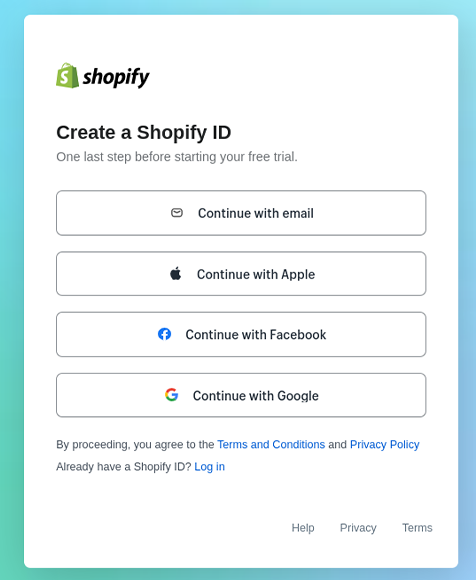
Sign Up for Shopify: Go to the Shopify website and sign up for an account. You’ll need to provide some basic information about your business.
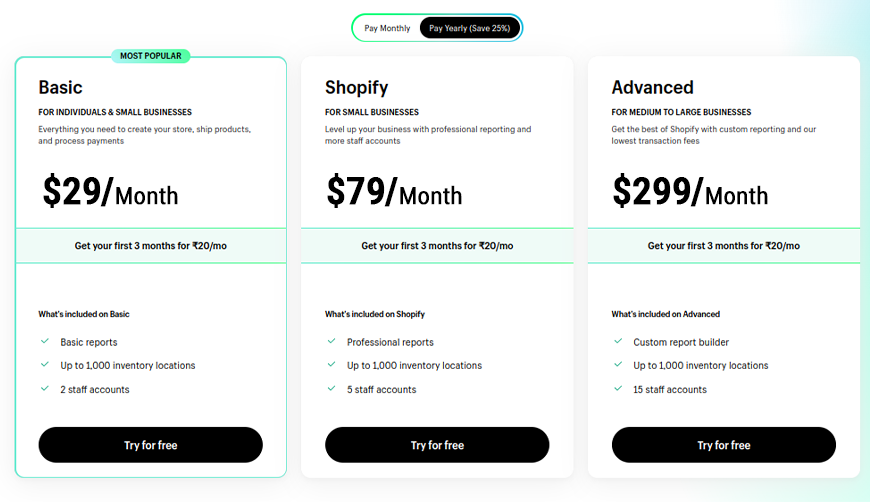
Choose a Plan: Shopify offers various pricing plans. Analyze every plan and select one that suits your needs and budget.
Set Up Your Store: Follow the prompts to set up your store, including choosing a store name, adding products, and configuring your store’s settings.
You can use a temporary or placeholder theme for now; later on, you can change the Shopify theme to personalize the design and make your store stand out among the crowd.
2. Install a Multi-Vendor Marketplace App
To enable multi-vendor functionality on your Shopify store, you’ll need to install a multi-vendor marketplace app from the Shopify App Store. Here’s how:

Access the Shopify App Store: From your Shopify dashboard, navigate to “Apps” in the left sidebar, then click “Visit Shopify App Store”.

Search for a Multi-Vendor App: In the App Store, use the search bar to find multi-vendor marketplace apps. A few of the most popular options are DDA – Digital Product Delivery, ShipTurtle, Multi-Vendor Marketplace, Duoplane, etc. Choose the one that aligns with your needs.
Install the App: Click on your chosen app, and then click the “Add app” button. Follow the installation prompts, which may include granting permissions and configuring initial settings.
There are thousands of quality applications available on the Shopify app store. Make sure you choose one that aligns with your website requirements.
3. Configure Marketplace Settings
Once you’ve installed the multi-vendor marketplace app, you’ll need to configure its settings:
General Settings: Set up basic details such as marketplace name, logo, and contact information. Customize the appearance to match your brand.

Seller Registration: After the general settings, define the process for sellers to register on your marketplace. Specify the information required and the approval process if necessary.
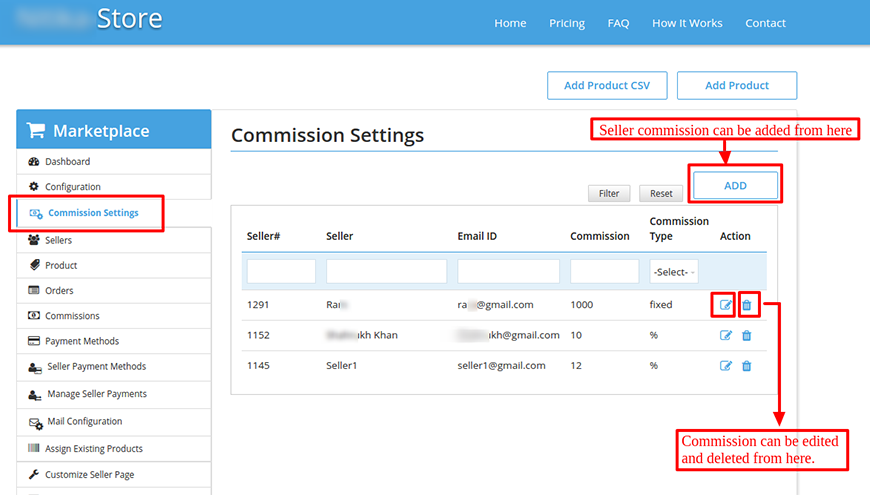
Commissions and Fees: Determine your commission structure. You can set fixed fees, percentage-based commissions, or a combination. Ensure that sellers understand these fees.
Configure the settings carefully, as they will set up a base for your Shopify multi vendor marketplace.
4. Enable Seller Onboarding
Seller onboarding is the process of bringing new sellers or vendors onto a marketplace platform, like Shopify and getting them set up to sell their products or services. To allow sellers to join your marketplace, you need to enable seller onboarding:

Seller Registration Page: Create a dedicated page where sellers can register. Make sure they provide essential info like their business name, contact details, tax identification number, and banking info for payment processing. You can link to this page from your website’s main menu.
Seller Profiles: Sellers should be able to create their seller accounts. They choose usernames, passwords, and profile information, which may include a seller bio, logo, and contact details.
Aim to set the stage for a positive seller experience and ensure that sellers can provide quality products and services to customers. The onboarding experience should be such that it fosters trust between sellers, buyers, and the platform itself.
5. Product Management
When trying to create a marketplace on Shopify, product management is a critical aspect to take care of. It involves strategic planning, organization, and control of the products or services offered by sellers on your marketplace. Moreover, it empowers sellers to list and manage their products efficiently.
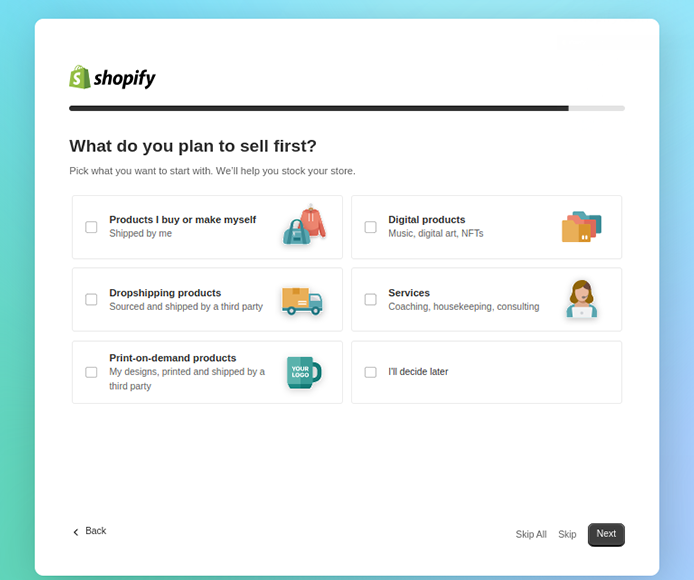
Product Listings: Sellers create detailed listings for their products or services. These listings typically include product titles, descriptions, images, prices, and any relevant attributes or variations (such as size or color).
Inventory Management: Efficiently manage inventory levels to prevent overselling or stockouts. Shopify provides tools for sellers to track available stock, receive low-stock notifications, and update inventory quantities as products are sold.
Search and Filtering: Implement search functionality and advanced filtering options to help customers refine their product searches. This feature is particularly useful when your marketplace offers a wide range of products.
This step of the process helps the sellers showcase their offerings and enhances the overall shopping experience for customers on your Shopify multi-vendor marketplace.
6. Payment Processing
This step of creating a marketplace on Shopify involves the secure and efficient handling of financial transactions between buyers and sellers. So, set up secure payment processing to facilitate transactions between buyers and sellers:

Payment Gateways: Integrate payment gateways into your marketplace, allowing various payment methods, like credit/debit cards, PayPal, UPI, etc. Make sure your payment gateways are compatible with the countries where your sellers are located and where your customers reside.
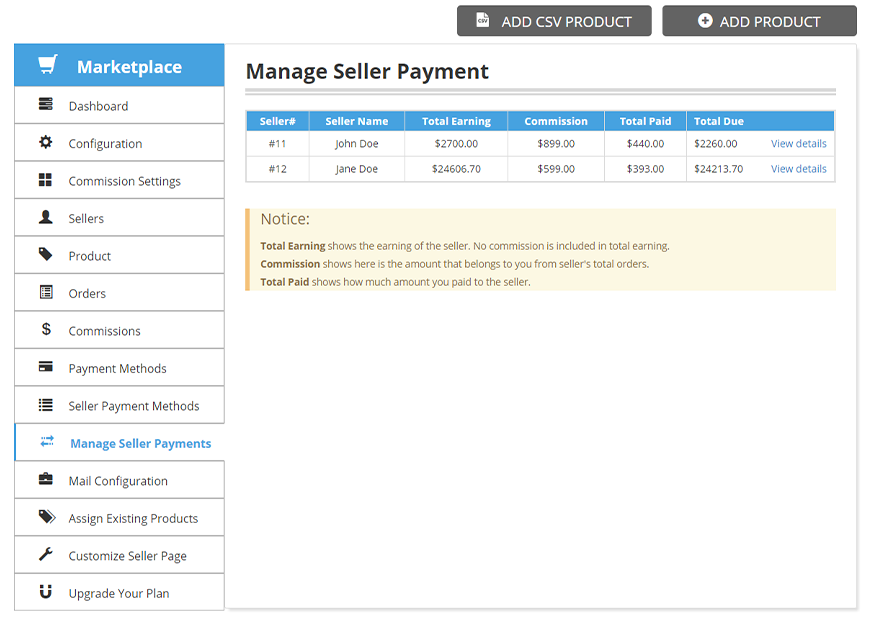
Commission Collection: As the marketplace operator, you have the option to charge sellers a commission or fee for using your platform. This commission is usually a percentage of the total sale or a fixed fee. Configure the system to automatically deduct commissions and fees from seller payouts.
Currency Conversion: If your marketplace operates internationally, consider currency conversion. Payment gateways may provide currency conversion services to allow sellers to receive payments in their preferred currency.
Effective payment processing is vital for the smooth operation of your Shopify multi-vendor marketplace. So, make sure the financial transactions are secure, transparent, and efficient for all parties involved.
7. Shipping & Order Tracking
Now, we are coming to a critical part of the process that affects the customers quite significantly. Make sure to provide sellers with tools to manage shipping and buyers with tracking information:
Shipping Options: Define and set up various shipping options within your Shopify marketplace, taking into account factors like shipping carriers, shipping zones, and shipping rates. Try to configure shipping options to accommodate the different needs of sellers on your platform.
Order Tracking: Implement order tracking features in your Shopify marketplace. That includes assigning a unique tracking number associated with the chosen shipping carrier. Customers receive this tracking number via email, which allows them to monitor the status of their order.
Efficient shipping and order tracking processes help build trust with customers and ensure the smooth operation of your Shopify multi-vendor marketplace. It enhances the overall shopping experience and encourages repeat business.
8. Customer Support & Dispute Resolution
Customer support and dispute resolution help ensure customers have a positive shopping experience, sellers receive fair treatment, and disputes are resolved promptly and fairly.
Customer Support: Provide contact information and support resources for both buyers and sellers. Make sure to acknowledge elements like communication channels, response time, training, resolution process, knowledge base, and more.
Dispute Resolution: Disputes can arise between customers and sellers or between sellers themselves. Establishing a fair and efficient dispute resolution process is essential. So when a customer or seller encounters an issue, they initiate a dispute through the marketplace’s designated channels.
Dispute resolution in a Shopify marketplace involves initiation, gathering info, mediation, resolution guidelines, escalation, decision & communication, and record keeping.
9. Marketing & Promotion
Make sure to implement effective marketing strategies to help attract new customers, engage existing ones, and encourage sellers to participate actively in your marketplace.
Digital Marketing: Utilize DM strategies, such as SEO, social media marketing, email campaigns, and paid advertising, to drive traffic to your marketplace. Implement Shopify SEO techniques to try and make sure your pages and product listings top the SERPs of Google and other search engines.
Seller Promotion: Encourage sellers to promote their products and your marketplace through their networks. Provide resources and guidance on effective seller marketing techniques, including social media promotion and email marketing. Feature seller programs to boost their visibility and sales.
Loyalty Programs: Implement a loyalty program that rewards repeat customers. Offer discounts, exclusive deals, or early access to loyal customers to encourage retention and repeat purchases.
Marketing and promotion efforts should align with your marketplace’s unique value proposition and target audience.
10. Analytics & Optimization
Regular analysis of data and informed adjustments can enhance the performance of your platform. That will help improve the UX and drive growth.
Analytics Tools: Use Shopify’s built-in analytics and reporting tools to gather data on various aspects of your marketplace. Key metrics to track include website traffic, sales, conversion rates, customer behavior, and seller performance.
Optimization: Continuously optimize your marketplace based on data insights. Make adjustments to improve user experience, conversions, and revenue. Also, your marketplace should be mobile-responsive and offer a seamless experience on smartphones and tablets.
Customer Feedback and Surveys: Collect customer feedback through surveys or feedback forms. Use this info to identify areas for improvement and prioritize enhancements based on customer input.
Finally, regularly review and adapt your strategies to keep your platform competitive and thriving in the e-commerce market.
Following these detailed steps and elements to successfully create a marketplace on Shopify. That means creating a platform where multiple sellers can showcase their products and services to a wide range of customers.
Top Features of a Shopify Marketplace
Shopify is an outstanding marketplace platform for anyone looking to venture into the multi vendor business. The process mentioned earlier can help you create an exceptional website with the following marketplace features:
Seamless Seller Onboarding: Shopify simplifies the process for sellers to register and set up shop on your marketplace. Sellers can create profiles, provide necessary information, and begin listing their products quickly. This feature encourages a diverse range of sellers to join your platform.
Product Catalog Management: Your multi-vendor marketplace on Shopify allows sellers to manage their product catalogs effortlessly. They can add detailed product descriptions, upload high-quality images, set competitive prices, and update inventory levels as needed. This user-friendly interface streamlines product management for sellers.
Secure Payment Processing: Shopify offers a secure and integrated payment processing system. Buyers can make transactions with confidence, knowing that their payment information is protected. This feature builds trust among users, promoting a thriving marketplace ecosystem.
Multi-Currency Support: Shopify’s multi-currency support enables your marketplace to cater to a global audience. Sellers can list their products in various currencies, expanding their reach to international buyers. This feature enhances the accessibility and appeal of your marketplace.
Inventory Management: Effective inventory management is crucial for a multi-vendor marketplace. Shopify provides robust tools for sellers to monitor and update their inventory in real time. Sellers receive low-stock alerts, ensuring a seamless shopping experience for customers.
Shipping & Order Tracking: Your marketplace benefits from Shopify’s shipping and order tracking capabilities. Sellers can choose from multiple shipping options, and customers can track their orders from purchase to delivery. This feature enhances transparency and convenience for all parties involved.
Customizable Storefronts: Shopify offers customization options that allow sellers to personalize their storefronts within your marketplace’s framework. This customization enables sellers to showcase their brand identity and products uniquely, contributing to a vibrant and diverse marketplace.
SEO Optimization Tools: Shopify provides built-in SEO optimization tools to help your marketplace improve its visibility on search engines like Google. Sellers can optimize product listings with keywords, meta tags, and descriptions, making it easier for buyers to discover their products.
Mobile Responsiveness: Shopify themes are designed to be mobile-responsive, ensuring your marketplace looks and functions flawlessly on smartphones and tablets. This responsiveness is essential for capturing mobile-savvy consumers and providing a smooth shopping experience.
Customer Reviews and Ratings: Customer reviews and ratings are invaluable for building trust and making informed purchase decisions. Shopify’s marketplace allows buyers to leave reviews and rate products, enhancing transparency and credibility. Positive reviews can boost a seller’s reputation and attract more customers.
These robust features collectively create a dynamic and user-friendly environment within your Shopify multi-vendor marketplace. Sellers can efficiently manage their offerings, and buyers can explore a wide range of products while enjoying secure transactions and a seamless shopping experience.
What is a Shopify Marketplace Kit?
Shopify Marketplace Kit is a collection of APIs, webhooks, and UI components that help developers build marketplaces on Shopify. It provides a framework for connecting merchants and buyers to millions of Shopify products and for managing all aspects of the marketplace experience, including product listings, storefronts, checkout, and payments.
This multi seller marketplace kit is designed to be flexible and extensible, so you can have Shopify programmers tailor it to your particular needs. It can be used to build marketplaces for various products, including physical goods, digital products, and services. Shopify Marketplace Kit is also compatible with a wide range of Shopify apps and extensions so that developers can add additional features and functionality to their marketplaces.
Some of the benefits of using Shopify Marketplace Kit include:
Accelerated development: Shopify Marketplace Kit provides a pre-built framework for building marketplaces, which can save developers a lot of time and effort.
Reduced costs: Shopify Marketplace Kit is a cost-effective way to build a marketplace, eliminating the need to develop and maintain custom infrastructure.
Scalability: Shopify Marketplace Kit is designed to scale with your business so you can focus on growing your marketplace without having to worry about the underlying technology.
Security: Shopify Marketplace Kit is built on Shopify’s secure and reliable platform, so you can be confident that your marketplace is safe and secure.
If you’re trying to build a multi vendor marketplace, I encourage you to check out Shopify Marketplace Kit. It is a powerful and flexible tool that can help you create a successful marketplace quickly and easily.
Top Tips for Creating a Shopify Multi Vendor Marketplace
In the above sections, I have tried to explain how to create a marketplace on Shopify, along with the best features of this platform. So in this section, we won’t see the obvious, i.e., choosing the right multi vendor app, setting up your marketplace, promoting it, and providing excellent customer service:
Let’s discuss some additional tips for Shopify development:
Tip 1: Focus on a Niche
It’s often better to focus on a specific niche when creating a marketplace. This will help you to attract a more targeted audience and differentiate yourself from other marketplaces.
Tip 2: Offer a Variety of Features
Buyers and sellers are more likely to use a marketplace that offers a variety of features, such as product reviews, seller ratings, and secure payment processing.
Tip 3: Make it Easy to Use
Your marketplace should be easy to use for both buyers and sellers. This means having a clear and intuitive interface, as well as providing comprehensive documentation and support.
Tip 4: Be Competitive With Your Fees
The fees that you charge buyers and sellers should be competitive with other marketplaces. You need to find a balance between generating revenue and making your marketplace affordable for users.
Tip 5: Invest in Marketing
Once you have created a great marketplace, you need to invest in marketing to promote it to potential buyers and sellers. You can do this through a variety of channels, such as social media, email marketing, and paid advertising.
Creating a successful Shopify multi vendor marketplace takes time and effort, but it can be a very rewarding experience. So make sure you follow the process of creating the marketplace, along with the tips mentioned above. That will help you stand out from the crowd.
Or you may opt for a Shopify development agency. They have the skills and resources to help you create, manage, and update the Shopify marketplace with ease.
FAQs on How to Create a Marketplace on Shopify
How do I attract sellers to my Shopify marketplace?
To attract sellers, promote your marketplace’s benefits, such as a ready-made platform, a large customer base, and marketing support. Highlight your marketplace’s niche and unique selling points. Reach out to potential sellers through social media, industry forums, and targeted marketing campaigns.
What strategies can help drive traffic and sales to my multi-vendor marketplace?
To drive traffic and sales to your multi-vendor marketplace, focus on SEO optimization, targeted social media ads, influencer marketing, and content creation. Offering vendor incentives, user-friendly UX, and affiliate programs can also boost visibility and conversions.
How can I scale and grow my Shopify multi-vendor marketplace over time?
Gradually scale your marketplace by expanding the number of sellers, products, and customer base. Consider entering new markets, adding new features, forming strategic partnerships, and continuously optimizing your platform based on data and user feedback.
To Summarize
Creating a marketplace on Shopify can be an excellent way to grow your business. Along with a user-friendly interface, this platform offers scalability, security, customization, integrated payment processing, global reach, and more. So, if you’re wondering how to create a multi vendor marketplace on Shopify, you’re probably on the right path.
I’ve deduced a process-cum-essential elements that will help you build an outstanding Shopify multi vendor marketplace.
- Set up your Shopify Store
- Install a Multi-Vendor Marketplace App
- Configure Marketplace Settings
- Enable Seller Onboarding
- Product Management
- Payment Processing
- Shipping & Order Tracking
- Customer Support & Dispute Resolution
- Marketing & Promotion
- Analytics & Optimization
Follow this process to the tee, and you’ll have a Shopify multi seller marketplace to compete with the best. For any more queries on the same, contact our experts today!




